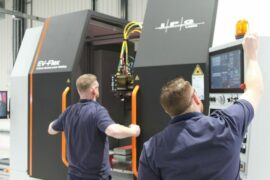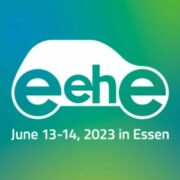The vehicle lighting industry is in the midst of evolution now; LED (Light Emitting Diode) is becoming more popular than traditional bulbs (Halogen and Xenon/HID) in high-end models because of the advantages in power consumption, service lifetime, light intensity, and size. The compact dimensions of LEDs or LED strings bring flexibility and imagination to car lighting designs, such as matrix headlights and dynamic taillights.
A smart matrix headlight usually consists of more than 30 LEDs, controlled by an intelligent control system that can adaptively change the LED operation according to road conditions. Sequential turn signal, the initial type of dynamic taillight, was firstly adopted in Ford Thunderbirds in 1965 and is now widely adopted in both automotive before-market and aftermarket for the cost and control benefits brought by LED solutions. In the future V2X (Vehicle to Everything) world, we can foresee driverless vehicles constantly communicating with the outside world through sensors or lights, improving road safety and mobility. At that time, there will be much more complicated LED pixels, consisting of hundreds of LEDs controlled to deliver the messages.
The dynamic taillight system requires more precise LED control and rapid signal communication. NCV7685 is the best option for a multi-LED driving condition. It is a 12-channel 60 mA LED linear current driver, which is I2C controllable, allowing 128 different duty cycle levels adjustable using pulse width modulation (PWM) independently for each output channel programmable via an I2C serial interface.
STR-NCV7685-REAR-GEVK is a Strata-enabled evaluation board for vehicle rear lighting applications with remote communication via Bluetooth Low Energy (BLE) which features the linear LED current driver NCV7685 and the industry’s lowest power consumption Bluetooth® 5 SoC, RSL10 SiP. There are six NCV7685 chips mounted to drive a total of 72 LED nodes to implement predefined animations with configurable parameters and customized patterns—all settings and circuit monitoring accessible via Strata.
Generally, fixed addressing is preferred in multiple LED driver applications to accomplish complicated animation and multi-LED control. However, additional attention is necessary to ensure the matching of chips and addresses for mass production or aftermarket maintenance. In the firmware of STR-NCV7685-REAR-GEVK, floating addressing is adopted. Each time the power is on, each NCV7685 will be assigned an address temporarily but not locked into the One Time Password (OTP) register—achieved by using either the GPIO of your MCU or IO expander if resources are limited (RSL10 and PAC9655E in STR-NCV7685-REAR-GEVK). The firmware code and all the documents, including the user manual and manufacturing files, are accessible in Strata Developer StudioTM, dramatically accelerating your design work.
To get started, download and install Strata Developer Studio. Then plug in the mini-USB cable provided with the kit from the board to the PC running Strata. Once connected, the board should be automatically detected, and the control user interface (UI) will be immediately accessible by clicking on the “Open Platform Controls” button. The navigation tabs in the control UI are self-explanatory and designed for a comprehensive evaluation experience.
Continue learning about our Strata-enabled rear lighting evaluation kit STR-NCV7685-REAR-GEVK and how you can use it to enhance your design today!
Related products and evaluation boards:
- NCV7685: 12 Channels 60 mA LED Linear Current Driver I2C Controllable for Automotive Applications
- RSL10 SiP: System-in-Package, Bluetooth® 5.2 Certified, SDK 3.6
- NCV891930: Low Quiescent Current 2 MHz Automotive Synchronous Buck Controller
- NCV8170: LDO Regulator, 150 mA, Low Dropout, Ultra-Low Iq
- SECO-NCV7685RGB-GEVB: RGB LIGHTING Evaluation Kit
- STR-NCV7685-AUTO-LED-GEVB: Strata Enabled Automotive LED Tail Lights Evaluation Kit










